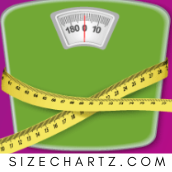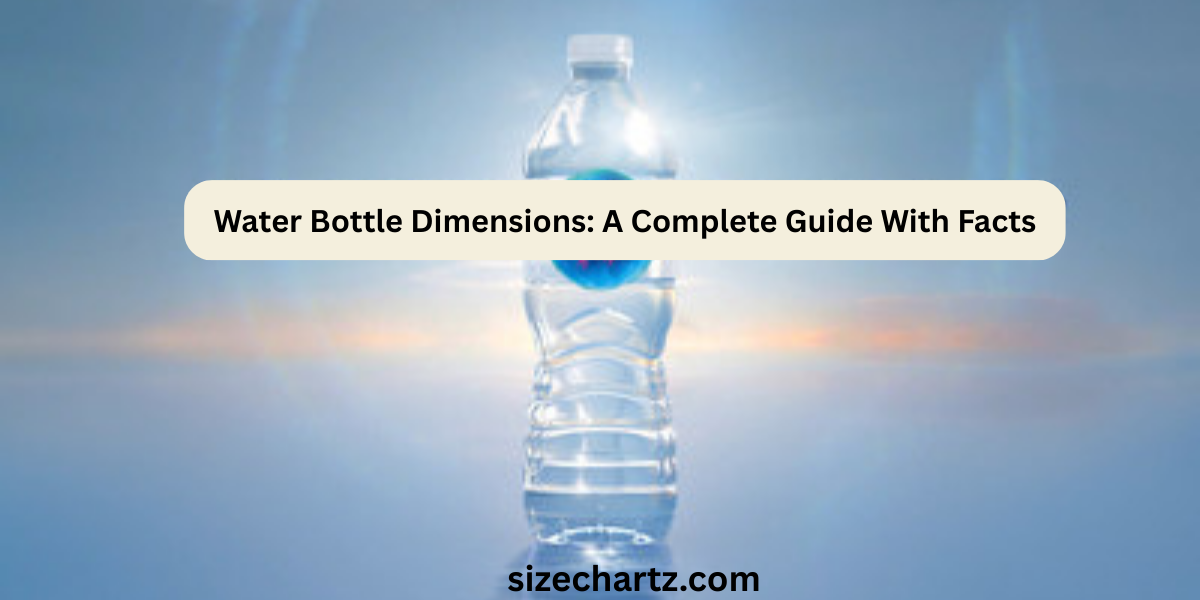Think about the last time you bought a water bottle. Did you grab it based on size, shape, or simply what was available? Many of us don’t give much thought to the dimensions of a water bottle—until we realize it doesn’t fit in our car’s cup holder, it’s too heavy to carry during a hike, or it doesn’t hold enough water to get us through the day.
Water bottle dimensions—height, width, diameter, and capacity—play a bigger role in daily life than most people realize. The right size can improve hydration habits, make travel easier, and even save space in your fridge or backpack.
In this complete guide, we’ll explore everything you need to know about water bottle dimensions, from standard measurements to specialized designs, along with comparisons, tips, real-world examples, and answers to the most common questions. By the end, you’ll know exactly which bottle size works best for you—and why.
What Do We Mean by “Water Bottle Dimensions”?
When we talk about water bottle dimensions, we’re referring to the physical measurements of a bottle that affect how it looks, feels, and functions. The key factors include:
- Height – How tall the bottle is from base to cap.
- Diameter/Width – How wide the bottle is at its base or body.
- Volume/Capacity – How much liquid it holds (measured in milliliters, liters, ounces, or gallons).
- Shape – Whether the bottle is slim, wide, tapered, or ergonomic.
- Weight – The empty bottle weight plus how heavy it feels when filled.
These dimensions influence everything from usability and comfort to storage and portability.
Standard Water Bottle Dimensions
While water bottles come in hundreds of shapes and sizes, a few standard dimensions dominate the market. Here’s a breakdown:
500 ml (16.9 oz) Water Bottle Dimensions
- Height: ~8 inches (20 cm)
- Diameter: ~2.5 inches (6.5 cm)
- Capacity: 500 ml / 16.9 oz
- Best for: Single-use bottles, casual drinking, lunch boxes
This is the most common size you’ll find in vending machines, office meetings, and convenience stores.
750 ml (25 oz) Water Bottle Dimensions
- Height: ~10 inches (25 cm)
- Diameter: ~3 inches (7.6 cm)
- Capacity: 750 ml / 25 oz
- Best for: Gym, cycling, or hiking
Popular among sports and reusable bottle brands because it balances capacity with portability.
1 Liter (32 oz) Water Bottle Dimensions
- Height: ~11 inches (28 cm)
- Diameter: ~3.5 inches (9 cm)
- Capacity: 1 liter / 32 oz
- Best for: Long workdays, heavy hydration needs, outdoor adventures
The 1-liter water bottle is a favorite among hikers, athletes, and office workers who want fewer refills.
1.5 Liter (50 oz) Water Bottle Dimensions
- Height: ~12–13 inches (30–33 cm)
- Diameter: ~3.5–4 inches (9–10 cm)
- Capacity: 1.5 liters / 50 oz
- Best for: Travel, long commutes, or shared use
Commonly sold in supermarkets as a “large” single-use bottle.
2 Liter (68 oz) Water Bottle Dimensions
- Height: ~13 inches (33 cm)
- Diameter: ~4 inches (10 cm)
- Capacity: 2 liters / 68 oz
- Best for: Family use, fridge storage, long trips
These are heavier and bulkier but ideal for group settings.
Gallon Water Bottles (3.78 liters)
- Height: ~11–13 inches (28–33 cm)
- Width/Diameter: ~6 inches (15 cm)
- Capacity: 1 gallon / 128 oz
- Best for: Fitness tracking, daily hydration goals, camping
Often used as motivational bottles with time markers for drinking throughout the day.
How Bottle Dimensions Affect Your Lifestyle
Different dimensions suit different needs. Here’s how size impacts usage:
- Portability – Slim bottles fit into backpacks and car cup holders, while wide bottles are harder to carry.
- Hydration Habits – Larger bottles encourage fewer refills but may feel heavy, while smaller bottles are lightweight but require frequent refills.
- Storage – Tall, slim bottles slide into fridge doors easily, whereas wide bottles take up shelf space.
- Durability – Wide bottles are often more stable and less likely to tip over.
- Ergonomics – Bottles with a diameter under 3 inches are easier to grip for most hand sizes.
Different Types of Water Bottles and Their Dimensions
1. Plastic Bottles (Disposable and Reusable)
- Most disposable bottles: 500 ml (8″ tall, 2.5″ wide)
- Reusable plastic bottles: Range from 12 oz (kids) to 64 oz (large capacity)
2. Stainless Steel Bottles
- Popular insulated bottles like Hydro Flask:
- 21 oz: ~9.5″ tall, 2.9″ diameter
- 40 oz: ~11″ tall, 3.5″ diameter
- Heavier due to double-wall insulation
3. Glass Bottles
- Usually 16–32 oz
- Dimensions similar to plastic but often slightly wider to accommodate thicker glass walls
4. Collapsible Bottles
- Foldable silicone designs
- Height varies when filled (~8–10″) but collapse flat when empty
Misconceptions About Water Bottle Dimensions
- “Bigger is always better” – Not true. While a gallon bottle seems efficient, it can be too heavy to carry daily.
- “Slim bottles hold less” – Some slim bottles are tall and can hold just as much as wider ones.
- “All 500 ml bottles are the same size” – False. Some are short and wide, others tall and slim.
Real-Life Examples: When Bottle Size Makes a Difference
- At the gym: A 1-liter bottle saves you from constant refills.
- Traveling by plane: TSA rules mean your carry-on bottle can’t exceed 100 ml if filled, but dimension matters for packing too.
- Cycling: A 750 ml slim bottle fits most bike cages, while a wide 1-liter won’t.
- Office desk: A tall slim bottle saves space on a crowded workstation.
Mistakes to Avoid When Choosing a Water Bottle Size
- Ignoring cupholder compatibility – Many bottles won’t fit in cars if diameter exceeds 3 inches.
- Overestimating your needs – Carrying a gallon jug may seem productive but can feel inconvenient.
- Not checking fridge space – Wider bottles may not fit in fridge doors.
- Choosing style over function – Trendy bottles may not suit your actual hydration habits.
Industry Trends: How Water Bottle Sizes Are Evolving
- Eco-friendly designs: Slim, lightweight reusable bottles replacing disposables.
- Insulated technology: Stainless steel bottles dominating the market in 20–40 oz sizes.
- Motivational gallon bottles: Marked with hourly drinking reminders.
- Smart bottles: Tracking hydration with sensors—typically sized at 17–21 oz for daily carry.
How to Choose the Right Water Bottle Dimensions for You
- For daily commuting: 500–750 ml slim bottles fit bags and cupholders.
- For athletes: 1 liter or more ensures fewer refills during training.
- For travelers: Collapsible bottles save space when empty.
- For office use: 32 oz bottles balance desk space and hydration needs.
- For extreme hydration goals: 1 gallon motivational bottles.
FAQs About Water Bottle Dimensions
Q: What is the average size of a water bottle?
A: The most common size is 500 ml (16.9 oz), about 8 inches tall and 2.5 inches wide.
Q: How tall is a 1-liter water bottle?
A: Most 1-liter bottles are about 11 inches tall and 3.5 inches in diameter.
Q: Do all water bottles fit in cupholders?
A: No. Most cupholders fit bottles up to 3 inches in diameter. Larger bottles won’t fit.
Q: Are bigger bottles better for hydration?
A: Not always. Bigger bottles reduce refills but can be heavy and inconvenient.
Q: What’s the difference between tall slim and short wide bottles of the same capacity?
A: Both hold the same volume, but slim bottles are easier to grip and fit in holders, while wide bottles are more stable.
Q: How much does a gallon water bottle weigh when full?
A: Around 8.34 pounds (3.78 kg), which can be heavy to carry around daily.
Q: Do reusable bottles have standard dimensions?
A: No, dimensions vary by brand and design, though popular ranges are 17 oz, 21 oz, 32 oz, and 40 oz.
Conclusion
Water bottle dimensions may seem like small details, but they shape how convenient, practical, and enjoyable your hydration experience is. The right height, width, and capacity depend on your daily routine, storage needs, and personal habits.
If you’re a commuter, a slim 500–750 ml bottle might be perfect. If you’re training for a marathon, a 1-liter or more makes sense. And if you’re chasing big hydration goals, a gallon bottle could keep you on track.
The next time you pick up a water bottle, pay attention to its dimensions—not just its style. The right choice can make staying hydrated easier, healthier, and much more hassle-free.


Leave a Reply